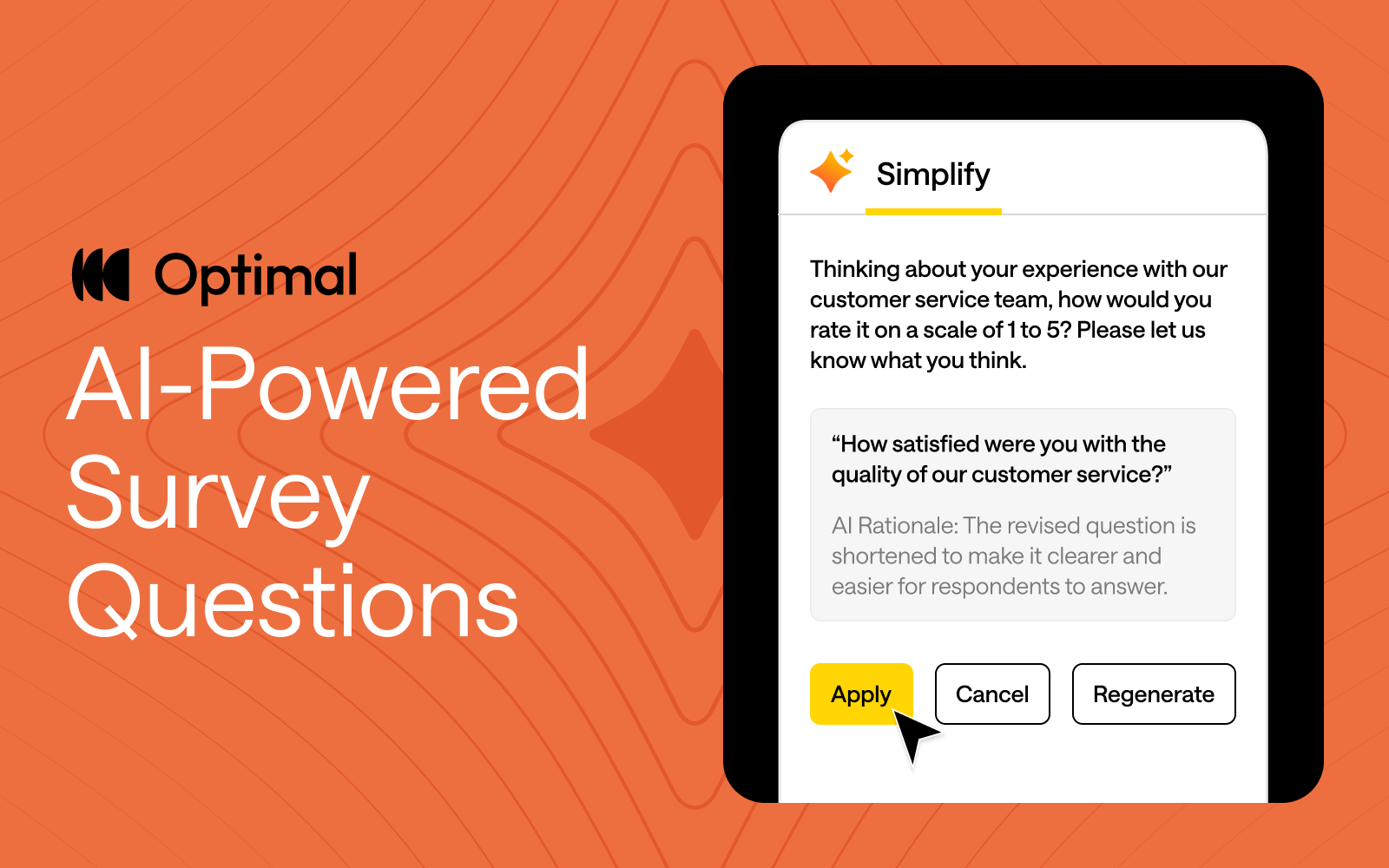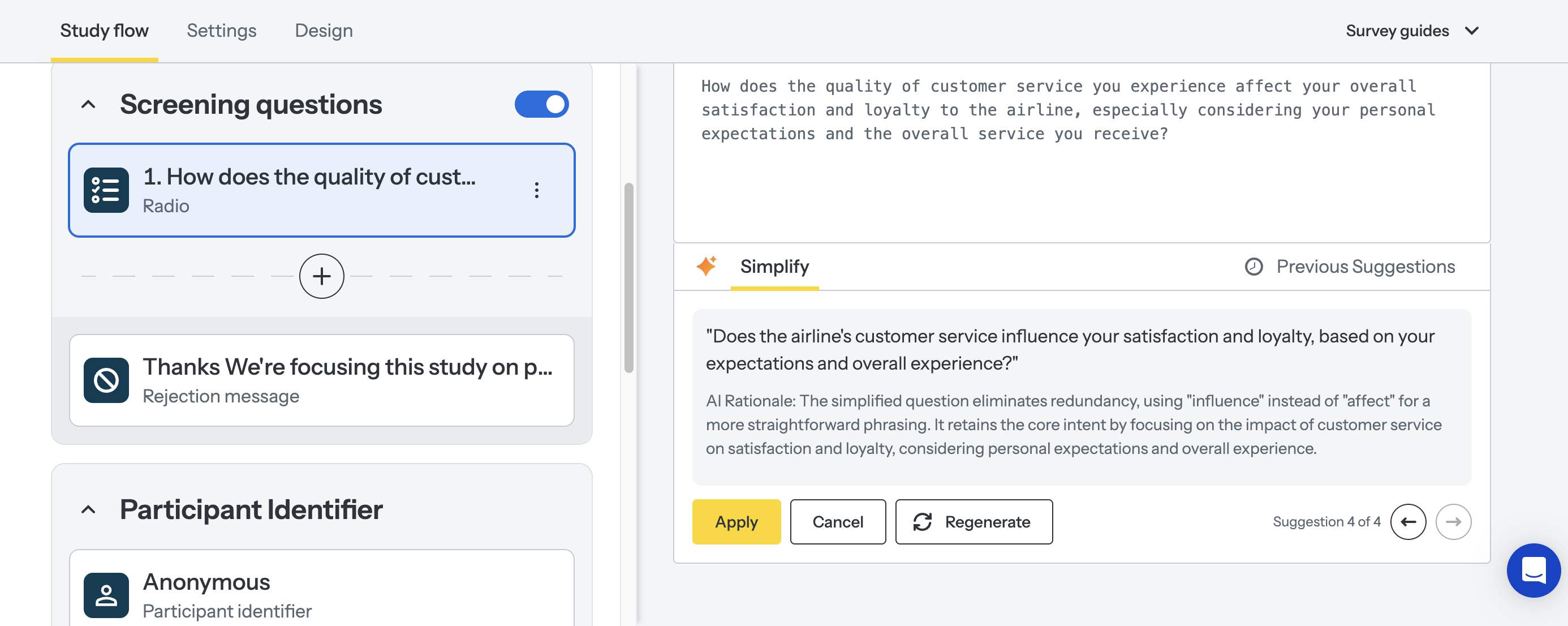
The choice between comprehensive research platforms and tools designed for smaller teams becomes increasingly critical as research and product teams work to scale their user insight capabilities. This decision impacts not only immediate research outcomes but also long-term strategic planning and organizational growth. While platforms like Lyssna focus on rapid feedback collection and quick turnaround times which are valuable for teams needing fast validation, Optimal delivers the depth, reliability, and enterprise features that the world's biggest brands require to make strategic product decisions.
Why do teams choose Optimal instead of Lyssna?
Comprehensive Insights vs. Speed-Only Focus
Optimal's Comprehensive Approach: Optimal combines speed with depth, delivering rapid study launch alongside AI-powered analysis, detailed reporting, and enterprise-grade insights that transform user feedback into actionable business intelligence. This includes live site testing capabilities that let you test actual websites and web apps without code, enabling continuous optimization post-launch.
Lyssna's Speed Focus: In contrast, Lyssna optimizes for quick feedback collection with simple testing workflows, but lacks AI-powered analysis, advanced reporting, and the sophisticated insights enterprise research programs require for strategic decision-making.
Trusted by Global Brands: Optimal serves enterprise clients including Lego, Nike, and Amazon with SOC 2 compliance, global security protocols, and dedicated enterprise support that meets Fortune 500 requirements.
Limited Enterprise Features: Lyssna operates as a testing tool rather than an enterprise platform, lacking the compliance, security, and support infrastructure global brands require for mission-critical research programs.
Participant Quality and Global Reach
Global Participant Network: Optimal's 10+ million verified participants across 150+ countries enable sophisticated audience targeting, global market research, and reliable recruitment for any demographic or geographic requirement.
Limited Panel Reach: Lyssna's small participant panel restricts targeting options and geographic coverage, particularly for niche audiences or international research requirements.
Verified Participant Quality: Optimal implements comprehensive fraud prevention, advanced screening protocols, and quality assurance processes that ensure participant authenticity and criteria matching for reliable research results.
Quality Control Issues: Users report that Lyssna participants often don't match requested criteria, compromising study validity and requiring additional screening overhead.
Advanced Features and Platform Capabilities
AI-Powered Insights: Optimal includes sophisticated AI analysis tools that automatically generate insights, identify patterns, and create actionable recommendations from research data. Our new Interviews tool exemplifies this innovation, upload interview videos and let AI automatically surface key themes, generate smart highlight reels with timestamped evidence, and produce actionable insights in hours instead of weeks.
Manual Analysis Required: Lyssna provides basic reporting without integrated AI tools, requiring teams to manually analyze results and generate insights from raw data.
Full-Service Flexibility: Optimal provides both self-service and white-glove managed recruitment services, accommodating varying team resources and research complexity with dedicated support for challenging recruitment scenarios.
Self-Service Only: Lyssna operates exclusively as a self-service platform without managed recruitment options for teams requiring specialized audience targeting or complex demographic requirements.
Sophisticated Yet Accessible: Optimal balances powerful functionality with intuitive design, providing guided templates and automation features that enable complex research without overwhelming users.
Simple but Limited: While Lyssna offers a straightforward interface, this simplicity comes with functional limitations that restrict test design flexibility and advanced research capabilities.
When to Choose Lyssna
Lyssna may suffice for teams with:
- Basic testing needs without strategic implications
- Limited budgets prioritizing low cost over comprehensive features
- Simple research requirements without compliance needs
- Acceptance of limited participant quality and geographic reach
When to Choose Optimal
Optimal becomes essential for:
- Strategic Research Programs: When user insights drive business strategy
- Global Organizations: Requiring international research capabilities
- Quality-Critical Studies: Where participant verification and data integrity matter
- Enterprise Compliance: Organizations with security and compliance requirements
- Advanced Analysis Needs: Teams requiring AI-powered insights and sophisticated reporting
- Scalable Research Operations: Growing programs needing comprehensive platform capabilities
Why Enterprises Need to Prioritize Enterprise Research Excellence
While Lyssna serves basic testing needs, enterprise research requires the depth, reliability, and global reach that only comprehensive platforms provide. Optimal delivers speed without sacrificing the sophisticated capabilities enterprise teams need for strategic decision-making. Don't compromise research quality for simple, quick tools.
Ready to see how leading brands including Lego, Netflix and Nike achieve better research outcomes? Experience how Optimal's platform delivers user insights that adapt to your team's growing needs.








